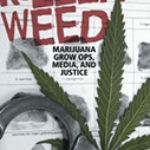LOCKING UP OUR OWN: CRIME AND PUNISHMENT IN BLACK AMERICA

Author: James Forman, Jr.
Publisher: New York: Farrar, Straus and Giroux, 2017. 306p.
Reviewer: David Schultz | October 2017
The criminal justice process has always been rough on Black America. Numerous authors have argued that dating from Emancipation and Reconstruction to the present, the criminal justice system has served as an alternative Jim Crow system, disproportionally stopping, searching, arresting, convicting, and incarcerating African-Americans compared to the other races. In many cases the argument has been that the criminal justice system is either intentionally or de facto racist, with its punitive measures overwhelmingly supported by Whites but not necessarily by people of color. Forman’s thesis challenges this simple racial argument, offering a more nuanced claim that many of the punitive criminal justice provisions adopted in the last 50 years have also enjoyed support among many in the African-American community, especially those who are middle class and affluent.
The driving question of this book is why did a “majority-black jurisdiction end up incarcerating so many of its own?” (9). Specifically, Forman, now a law professor at Yale, writes of his experiences serving as a public defender in Washington, D.C. His book chronicles his experiences and observations on the D.C. criminal justice system before, during, and after his tenure, covering a time frame from the Nixon presidency in 1969 to the present under Trump. During that time, and especially coming out of the 1960s when crime was soaring, Nixon promised law and order and to get tough on crime and drugs. Reagan pushed the war on drugs, Clinton for increasingly harsh prison sentences, and members of Congress across the partisan isle engaged in a bidding war to inflate prison sentences with mandatory minimums, repeat offender clauses, and the special targeting of individuals, all whom were suspected of using or selling drugs or guns. As a result, the number of Americans incarcerated soared, with African-Americans more heavily burdened than Whites. One would have thought that the Black community would have universally condemned such measures, but they did not, and that is the paradoxical issue Forman tackles.
Repeatedly, Forman found that in Washington, D.C.–a majority of whose residents are African-American–those residents supported many of the same get tough on crime proposals supported across the country. Such national support included from African-American communities. The reason for this is partly that much of the crime committed by Black America victimized Black Americans. Black on Black crime was a problem, and support for a more punitive approach to such behavior came from middle class and more affluent African-Americans whose fears often mirrored those of white America. Yes, getting tough on crime hurt poor Blacks in D.C., but the more affluent shared many of the same fears about crime as white America, and therefore endorsed many of the same get-tough provisions.
The book is a first-hand account by Forman of how the criminal justice system specifically hurt poor Blacks, but his discussion takes the reader through many of the major criminal justice debates of the last 50 years. The 1970s saw political fights over marijuana decriminalization and gun violence, the 1980s experienced PCP, crack, and the demand to wage a war on drugs, and then the Clinton era saw an effort to hire more police, increase drug sentences, and impose more punishment upon offenders. Across all of these initiatives, Forman points to a divided Black community in D.C., and across the country, finding that class intersected with race, dividing African-Americans on crime issues just as deeply as it divided offenders and victims. Perhaps the most fascinating discussion in the book pointed to the move to integrate and employ Black police officers. The belief was that such integration would mitigate or eliminate the abuses associated with an all-White police force. Yet Black officers did not appreciably change the racial impact on African-Americans. Among the reasons offered for this irony, Forman asserts that the individuals who took these jobs did so not as civil rights reformers but because they saw being a police officer as a good job, and to succeed they had to go along with the norms demanded by their superiors.
Locking Up Our Own offers an alternative insight into crime and race that is not all Black versus White. It is insightful as to how class divides African-Americans, even with a criminal justice system that disproportionally targets Blacks. Forman offers occasional hopeful messages and stories about the clients he represented, but generally this is a bleak, honest, and cogent insight into what the get tough on crime policies have done to America in general and to dividing Black America more specifically.
David Schultz, Professor, Department of Political Science, Hamline University, St Paul, MN, 55104

